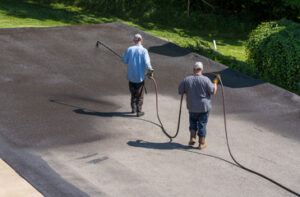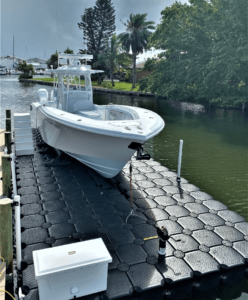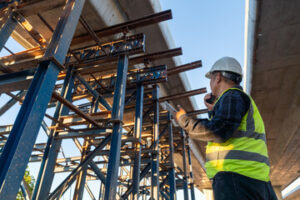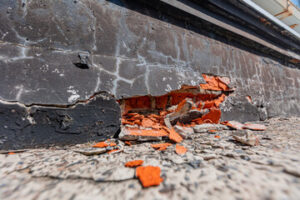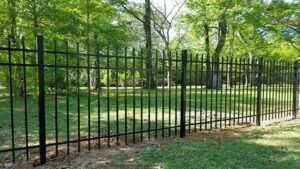Masonry is an ancient craft that has shaped the built environment for thousands of years. From the towering pyramids of Egypt to the majestic cathedrals of Europe, masonry has left an indelible mark on human history. In this essay, we will explore the art, science, and enduring legacy of masonry, examining its historical significance, contemporary applications, and future prospects. For more information, click the link http://summitpavers.com to proceed.
Historical Roots:

The origins of masonry can be traced back to the earliest civilizations, where the need for shelter and protection led to the development of rudimentary building techniques. Early masons worked with simple tools and local materials to construct primitive structures, using techniques such as dry-stone stacking and mudbrick construction.
As civilizations advanced, so too did the art of masonry. The ancient Egyptians, renowned for their monumental architecture, mastered the art of quarrying and shaping massive stone blocks to create structures such as the Great Pyramid of Giza. Similarly, the Greeks and Romans made significant contributions to masonry, employing techniques such as ashlar masonry and concrete construction to build temples, aqueducts, and amphitheaters.
During the Middle Ages, masonry reached new heights of sophistication with the construction of Gothic cathedrals across Europe. Skilled stonemasons, organized into guilds, erected towering structures adorned with intricate carvings, stained glass windows, and soaring vaulted ceilings. These masterpieces of medieval masonry remain awe-inspiring marvels of engineering and craftsmanship to this day.
Contemporary Practices:
While the tools and techniques of masonry have evolved over the centuries, the core principles remain the same. Modern masons continue to work with natural materials such as stone, brick, and mortar to create durable and aesthetically pleasing structures.
One of the most common materials used in modern masonry is brick. Fired clay bricks are versatile, durable, and relatively easy to work with, making them a popular choice for a wide range of applications. Modern bricklaying techniques, such as the Flemish bond and stretcher bond, allow masons to create intricate patterns and designs.
Stone masonry, meanwhile, remains a hallmark of quality craftsmanship. Skilled stonemasons use traditional techniques such as quarrying, cutting, and dressing to shape natural stone into blocks, slabs, and other architectural elements. Whether building a retaining wall, a fireplace surround, or a grand entranceway, stone masons take pride in their ability to work with this timeless material.
Advancements in technology have also had a significant impact on the field of masonry. Power tools such as diamond-tipped saws and pneumatic hammers have made cutting and shaping stone and brick faster and more precise than ever before. Additionally, modern mortar mixes, fortified with additives such as lime and polymers, offer improved strength, durability, and workability compared to traditional lime-based mortars.
Applications in Architecture:
Masonry remains a staple of contemporary architecture, valued for its durability, versatility, and aesthetic appeal. In residential construction, masonry is often used to create exterior facades, interior walls, and fireplaces. Brick and stone veneers can give a home a timeless, elegant look, while concrete block construction offers strength and durability in high-wind or seismic regions.
In commercial and institutional settings, masonry is prized for its ability to create imposing, monumental structures that stand the test of time. From office buildings and shopping centers to schools and government buildings, masonry lends a sense of permanence and prestige to the built environment. Additionally, masonry’s fire-resistant properties make it an ideal choice for structures where safety is a primary concern.
Masonry also plays a vital role in landscape architecture, where it is used to create retaining walls, terraces, and other hardscape features. Whether constructing a garden wall or a grand staircase, masons draw on their knowledge of materials and techniques to create structures that blend seamlessly with the natural surroundings.
Challenges and Opportunities:
Despite its enduring appeal, masonry faces challenges in the modern construction industry. The rising cost of materials and labor, coupled with increasing competition from alternative building methods such as steel and concrete, has led some to question the future viability of masonry.
However, masonry also presents opportunities for innovation and adaptation. Advances in materials science, such as the development of engineered stone and sustainable brick alternatives, offer new possibilities for masons to explore. Likewise, the growing interest in green building practices and historic preservation has created demand for skilled masons who can work with traditional materials and techniques.
Masonry is a timeless craft that has stood the test of time. From its humble beginnings in ancient civilizations to its modern-day applications in architecture and construction, masonry continues to shape the world around us. While the tools and techniques may have evolved, the core principles of craftsmanship, durability, and beauty remain unchanged. As we look to the future, masonry will undoubtedly continue to play a vital role in building the cities, towns, and structures of tomorrow.
The origins of masonry can be traced back to the dawn of civilization, with evidence of stone structures dating back thousands of years. Ancient civilizations such as the Egyptians, Mesopotamians, Greeks, and Romans pioneered the techniques of quarrying, cutting, and stacking stone to create monumental structures such as pyramids, temples, aqueducts, and coliseums. These early masons developed sophisticated methods for shaping and fitting stones together, laying the groundwork for the evolution of masonry as a craft.
During the Middle Ages, masonry flourished as Gothic cathedrals and medieval castles rose to prominence across Europe. Skilled artisans known as stonemasons employed intricate carving, vaulting, and tracery techniques to create elaborate architectural masterpieces that still awe and inspire to this day. The Renaissance period witnessed a revival of classical masonry traditions, with architects and builders incorporating elements of Greek and Roman architecture into their designs.
In the modern era, masonry continued to evolve with advancements in materials, technology, and construction methods. The Industrial Revolution brought innovations such as fired clay bricks, Portland cement, and reinforced concrete, revolutionizing the field of construction and expanding the possibilities of masonry.
Masonry encompasses a wide range of materials, including natural stone, clay bricks, concrete blocks, and mortar. Each material offers unique characteristics in terms of strength, durability, and aesthetic appeal, allowing masons to choose the most suitable option for a given project. Natural stone, prized for its beauty and longevity, is often used in high-end residential and commercial construction. Clay bricks, fired at high temperatures, provide a versatile and cost-effective building material for a variety of applications. Concrete blocks, reinforced with steel bars, offer strength and stability in structural walls and foundations. Mortar, a mixture of cement, sand, and water, serves as the binding agent that holds masonry units together.
Masonry techniques vary depending on the material and desired outcome. Traditional techniques such as rubble masonry and ashlar masonry involve stacking irregularly shaped stones or precisely cut blocks in horizontal courses, with mortar filling the gaps between them. Bricklaying techniques include common bond, Flemish bond, and English bond, each providing different patterns and structural stability. Modern masonry techniques incorporate prefabricated elements, such as precast concrete panels and modular brick systems, to streamline construction and enhance efficiency.
Masonry structures must be designed and constructed to withstand various loads, including gravity, wind, seismic forces, and temperature fluctuations. Masonry walls can be load-bearing, supporting the weight of the structure above them, or non-load-bearing, serving as partitions or veneers. Load-bearing walls are typically thicker and require a solid foundation to distribute the weight evenly and prevent settlement. Reinforced masonry walls incorporate steel reinforcement bars or mesh to enhance structural strength and resistance to lateral forces.
In addition to structural considerations, masonry must also address issues such as moisture infiltration, thermal insulation, and fire resistance. Proper detailing and waterproofing techniques help prevent water penetration and protect masonry walls from deterioration over time. Insulating materials, such as foam boards or cavity walls filled with insulation, improve energy efficiency and occupant comfort. Fire-rated masonry assemblies, constructed using fire-resistant materials and mortar, provide passive fire protection in buildings, delaying the spread of flames and smoke in the event of a fire.
